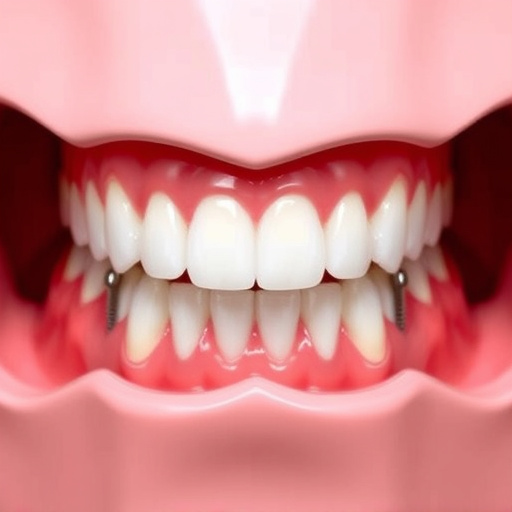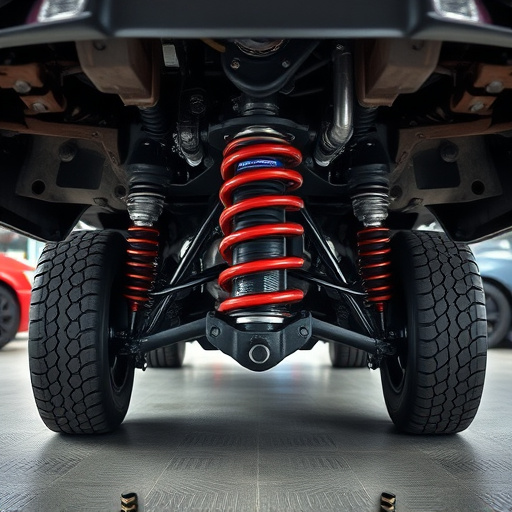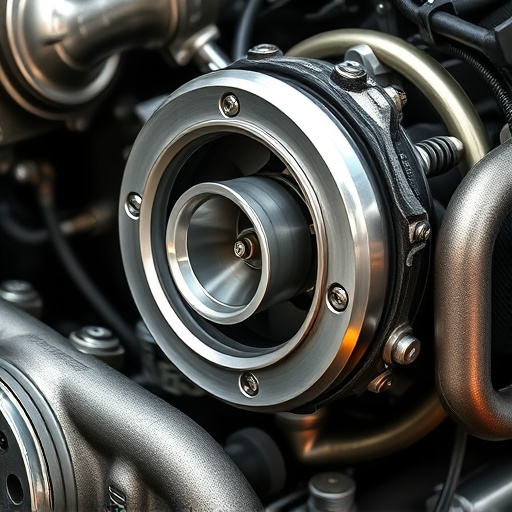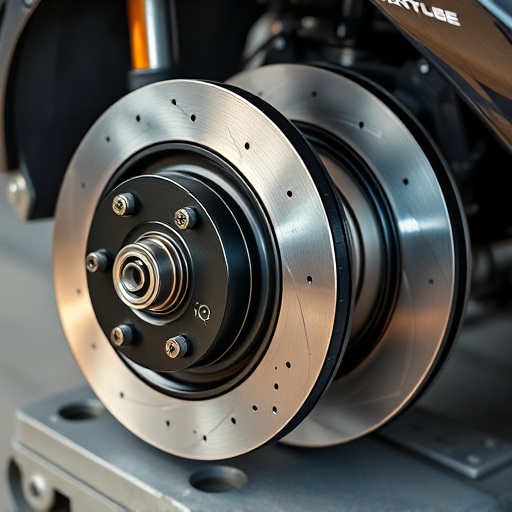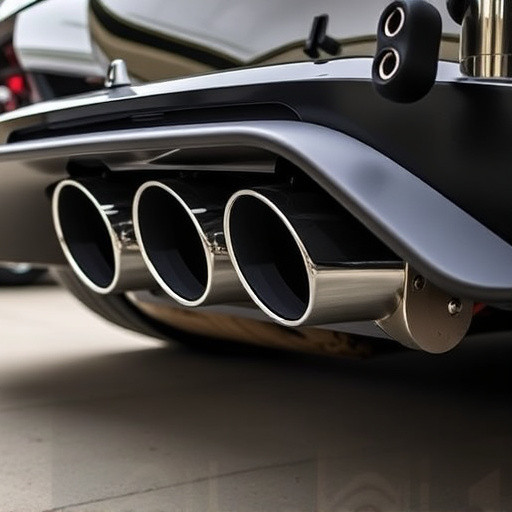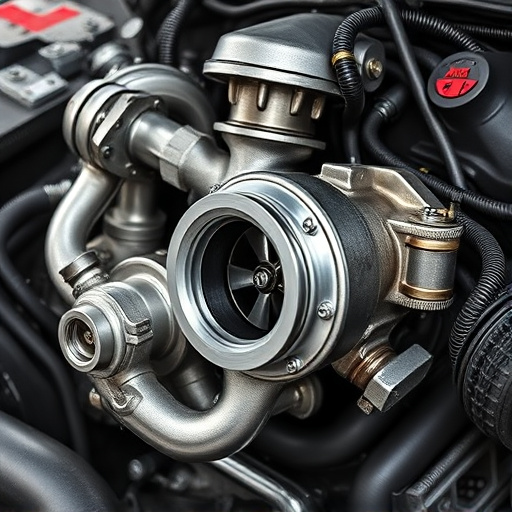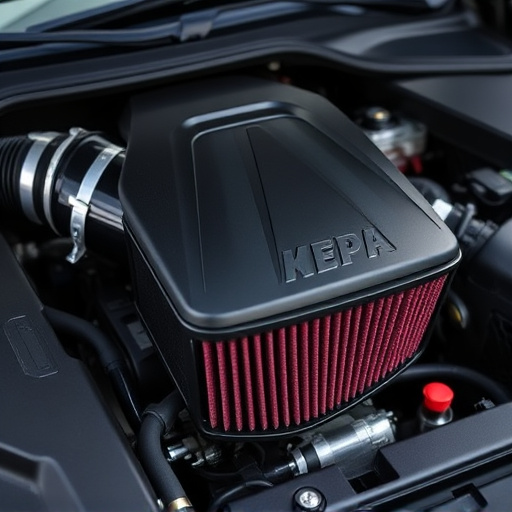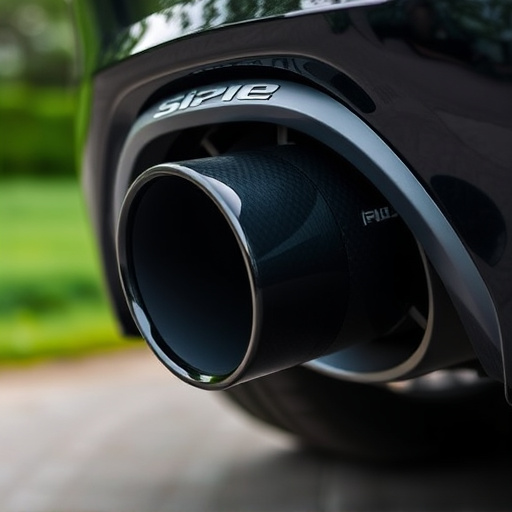Suspension arm bushings are critical for vehicle safety and performance, absorbing shocks and enabling smooth movement. Over time, they wear, leading to handling issues, uneven tire wear, and potential damage to other parts. Regular inspection is key; signs of degradation include unusual noises and steering abnormalities. Diagnosing problems involves visual checks, testing flexibility, and comparing performance. Upgrading to high-quality bushings or complete suspension components ensures a safer, more comfortable ride.
Suspension arm bushings, crucial components in your vehicle’s suspension system, absorb shock and enable smooth driving. When these bushings deteriorate, they can lead to severe handling issues and safety hazards. This article guides you through understanding the role of suspension arm bushings, recognizing common signs of damage, and employing effective diagnosis methods for related problems. By mastering these skills, you’ll be equipped to identify and address suspension arm bushing issues promptly.
- Understanding Suspension Arm Bushings and Their Function
- Common Signs of Suspension Arm Bushing Issues
- Diagnosis Methods for Suspension Arm Bushing Problems
Understanding Suspension Arm Bushings and Their Function
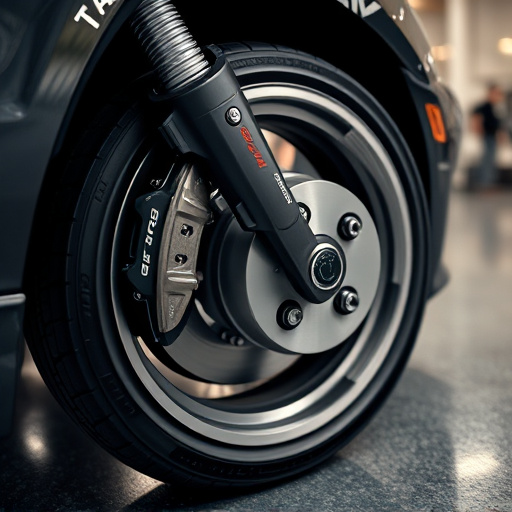
Suspension arm bushings are integral components that play a crucial role in your vehicle’s overall performance and handling. These bushings act as bearings, connecting various suspension components to the chassis or frame of your car. Their primary function is to allow for smooth, unrestricted movement while absorbing shock and vibrations from bumps in the road. Over time, these bushings can wear down due to constant use, leading to several related suspension issues that can impact vehicle performance.
Understanding how suspension arm bushings work is essential when diagnosing problems. Worn or damaged bushings may cause steering abnormalities, increased body roll during turns, and a rough ride. They are often overlooked during routine maintenance checks but can significantly affect the performance of other critical components like brake pads, especially if not addressed promptly. Regular inspection of these bushings, along with high-quality performance air filters, can help ensure optimal vehicle handling and safety.
Common Signs of Suspension Arm Bushing Issues
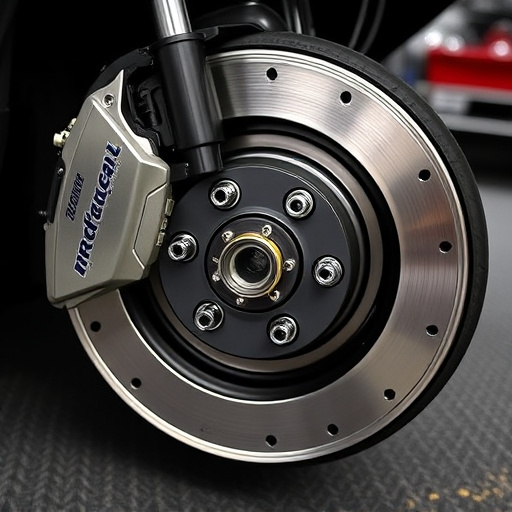
The suspension arm bushings are vital components that connect various parts of your vehicle’s suspension system. When these bushings start to degrade or wear out, it can lead to several noticeable issues that impact both your car’s performance and safety. Some common signs that indicate problems with suspension arm bushings include unusual noises coming from the undercarriage, particularly when navigating over bumps or turns. This could be a scraping or clicking sound, which often worsens with speed.
Another telltale sign is uneven tire wear patterns, where one side of your tires appears to be wearing faster than the other. This may also result in your vehicle pulling to one side while driving straight or showing signs of handling issues. Given that suspension arm bushings play a crucial role in maintaining alignment and stability, their deterioration can affect the overall performance of your car’s intake components, especially when combined with worn-out coilover kits. Even your brake pads could be impacted, as bushing issues might lead to improper braking due to misaligned wheels.
Diagnosis Methods for Suspension Arm Bushing Problems
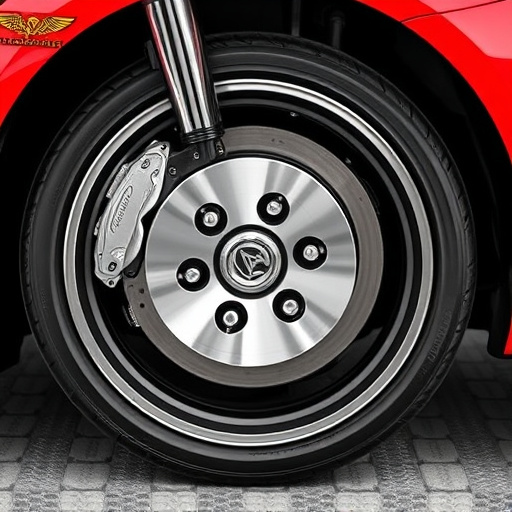
Diagnosing suspension arm bushing issues requires a systematic approach to pinpoint the exact problem. One effective method is to inspect the bushings visually for any signs of wear, damage, or deformation. Worn-out bushings may exhibit cracks, excessive friction, or an irregular surface, all of which can impact vehicle handling and stability. Additionally, checking for excessive play or loose components in the suspension system is crucial. Tools like a floor jack and support stands can help lower and secure the vehicle to gain better access.
Another diagnostic step involves testing the bushing’s flexibility and stiffness using specialized tools. Compression tests can measure the bushings’ ability to withstand force, revealing any significant loss of elasticity that may indicate failure. Moreover, comparing the performance of the suspected bushings with known good ones can help identify discrepancies in terms of comfort, handling, and noise levels. Upgrading to coilover kits or installing high-quality suspension components like performance brakes and muffler tips might be considered as solutions once the issue is confirmed, ensuring a smoother and safer ride.
Suspension arm bushings play a crucial role in your vehicle’s handling and safety. By understanding common signs of issues, such as unusual noises, steering wobbles, or decreased ride quality, you can proactively diagnose problems. Through various diagnosis methods like visual inspections, road tests, and advanced scanning tools, identifying worn or damaged bushings becomes manageable. Regular maintenance and timely replacements of suspension arm bushings are essential to ensure a smooth, safe, and comfortable driving experience.







